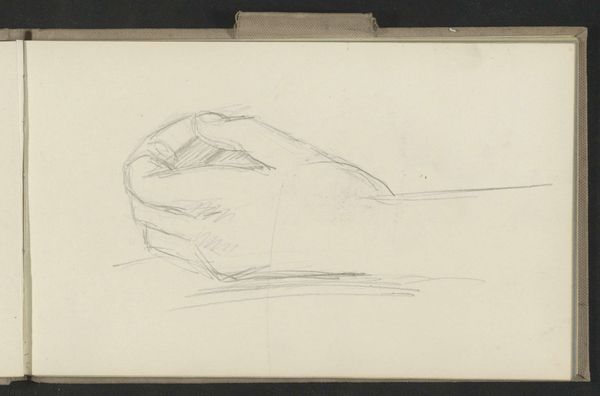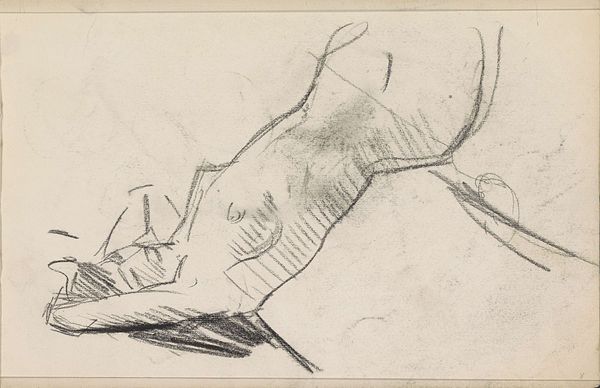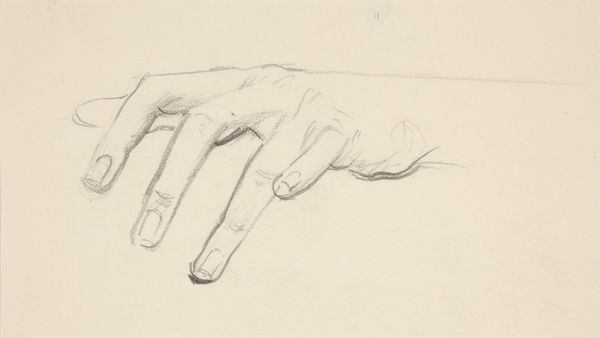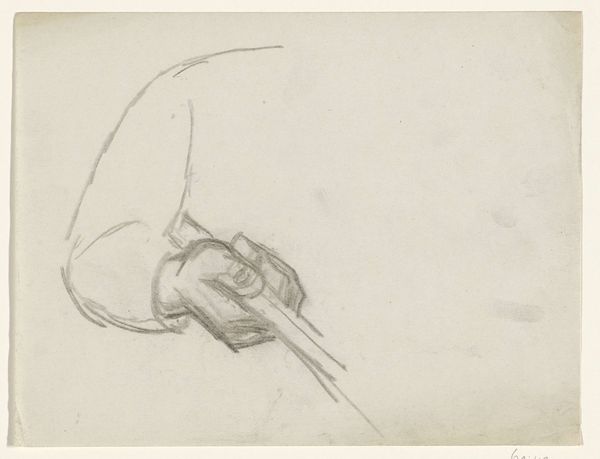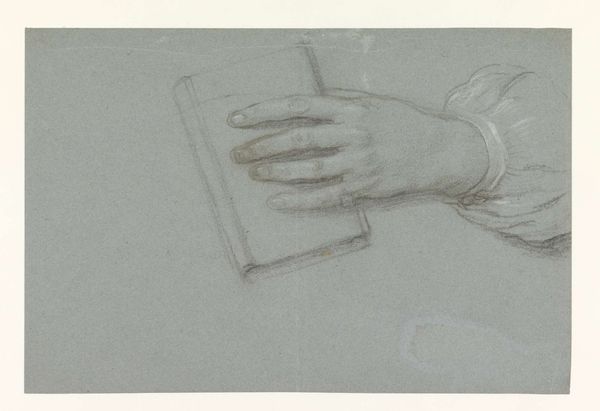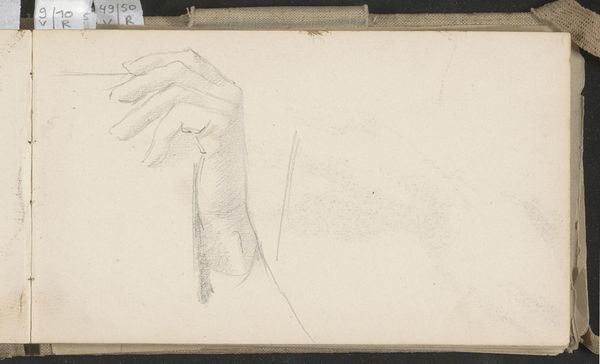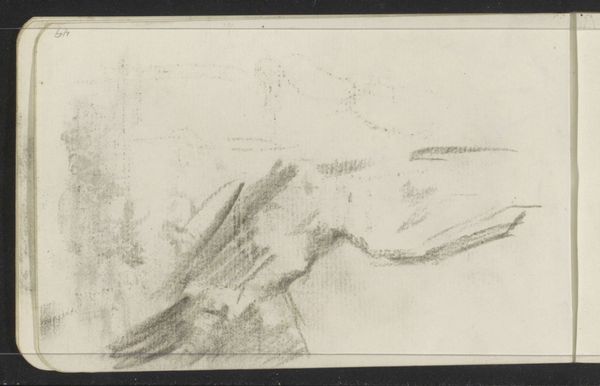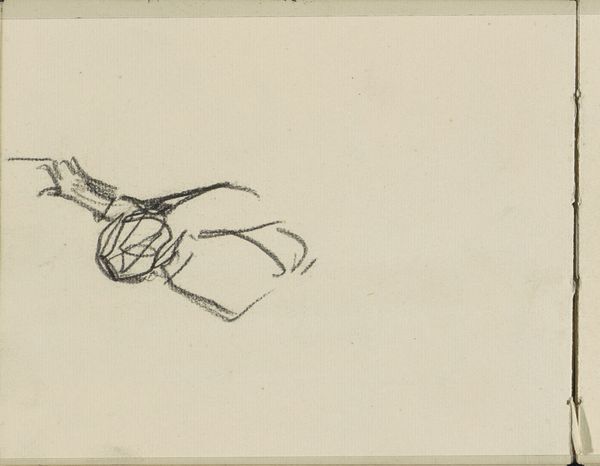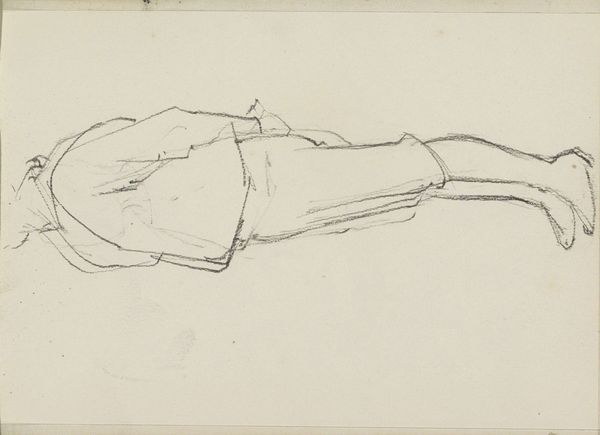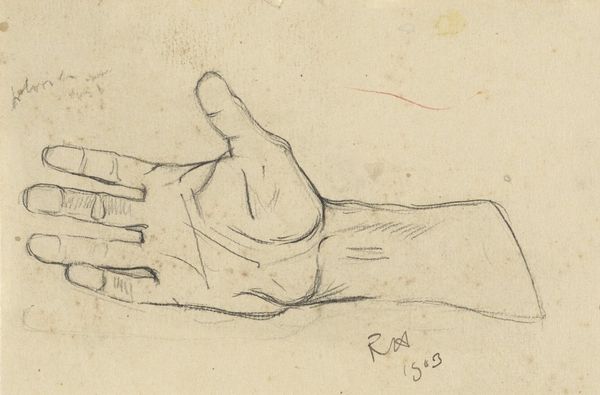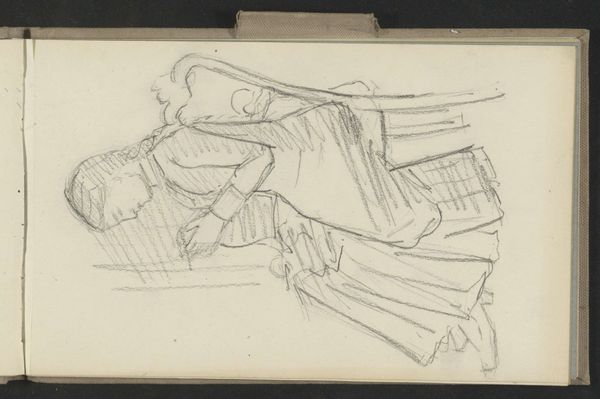
drawing, paper, pencil
#
portrait
#
drawing
#
amateur sketch
#
aged paper
#
light pencil work
#
sketch book
#
hand drawn type
#
figuration
#
paper
#
personal sketchbook
#
sketchwork
#
pen-ink sketch
#
pencil
#
sketchbook drawing
#
genre-painting
#
sketchbook art
#
realism
Copyright: Rijks Museum: Open Domain
Editor: This drawing, titled "Left Hand Holding a Dish," is by Jozef Israëls and was created sometime between 1834 and 1911. It's a pencil drawing on paper, currently held at the Rijksmuseum. It feels very intimate, almost like a page torn from the artist’s sketchbook. What compositional elements stand out to you? Curator: I’m immediately struck by the stark contrast between the tentative lines defining the hand and the dish, versus the intentional application of light and shadow. Note the hand’s skeletal rendering versus the depth achieved on the vessel. It is a fascinating juxtaposition of definition that lends this work it’s sense of materiality. Editor: I hadn't noticed the stark difference. So, you're saying that tension in style directs my attention? Curator: Precisely. This visual push-and-pull creates an interesting compositional tension. Further, examine the negative space around the hand and dish. The artist doesn't merely outline forms but instead builds substance through these formal relationships of dark and light. Are you drawn to a narrative, or simply a formal analysis of form and value? Editor: I feel like it reveals a fleeting glimpse into Israëls’s creative process. Almost like the artist wants to show us only a mere memory. Does that fit your structuralist viewpoint? Curator: That’s astute. I find myself more concerned with how meaning is constructed, rather than arriving at a singular "correct" meaning. I consider this image a set of signifiers arranged by the artist. He expects the viewer to draw their own conclusions based on their personal history with sketches or still life or human gestures, but without dictating such things.. Editor: It’s fascinating how this simple sketch can be so rich in formal complexity! Curator: Indeed. There's always more to observe in the nuances of an artwork's composition and material presence. The materiality suggests an unfinished quality; the light in turn gives definition. It’s a conversation of tension, and there lies its depth.
Comments
No comments
Be the first to comment and join the conversation on the ultimate creative platform.
